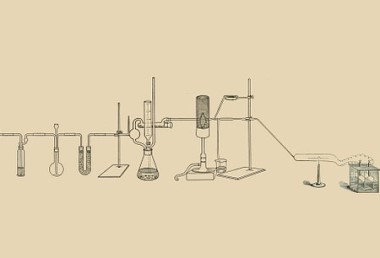Can we help you?
Contact us

Can we help you?
Contact us

Thank you for contacting us
Your form has been submitted successfully Our team will contact you again as soon as possible.
Whooppss...!! An error has occurred
Try sending later or write an email directly to areaempresas@ua.es

 PATENTED TECHNOLOGY
PATENTED TECHNOLOGY
INFO
SHEET
DOWNLOAD
EXECUTIVE
ABSTRACT
CONTACT DETAILS: Research Results Transfer Office-OTRI
University of Alicante
Tel.: +34 96 590 99 59
Email: areaempresas@ua.es
http://innoua.ua.es
A single system able to simultaneously provide information on the of anion and cation contents in water samples through ICP-AES has been developed in the polymers and nanomaterials research group of the University of Alicante.
Companies interested in the commercial and technical development of the system are sought.

The determination of the content of anions and cations to obtain the ionic balance in water samples is currently requiring the use of several, time consuming and sometimes expensive techniques. The polymers and nanomaterials research group of the University of Alicante has developed a single and unique system providing simultaneously this kind of information.
The system has three vessels containing a first one for the sample (1, Figure 1), a second one for a silver nitrate solution (2, Figure 1) and a third one with a nitric acid diluted solution (3, Figure 1). Three PTFE capillaries (4-6, Figure 1) and two ‘t-unions’ (8-9, Figure 1) are also employed. The setup also has a peristaltic pump (7, Figure 1), a capillary reactor (10, Figure 1), a filter (12, Figure 1), a valve (11, Figure 1) and a liquid – gas phase separation system (13, Figure 1) that is only employed to carry out the analysis of samples with a high content of organic matter.

Figure 1
The analysis procedure is carried out in the following steps:
a) Mixing: The peristaltic pump aspirates both sample and silver nitrate at a constant flow rate. Both streams mix together by means of a tee shaped unión. Then, the resulting mixture combined with the nitric acid solution by using a second tee union.
b) Reaction: The final solution goes through a capillary reactor where chemical reactions take place.
c) Separation: A filter and/or a gas – phase separator was employed depending on the sample organic matter content. The mixture is forced to pass through a filter. For those samples having high dissolved organic compounds the gas – liquid phase separation system is employed.
d) Measurement: The mixture reaches the ICP-AES spectrometer where the emission intensity of each of the elements of interest is taken at characteristic wavelengths.
The present system is easy-to-automatize through the use of a robotized arm and a carrousel containing the samples. To achieve this an autosampler commonly employed to carry out ICP-AES routine analysis can be used.
The following table shows a comparison between the developed system and the conventional method:

ADVANTAGES
• Easy-to-atomate system.
• Only an instrument (ICP-AES) instead of three different methods (ICP-AES, acid-base titration and ion chromatography) is required to determine anions and cations.
• Analysis time is drastically shortened thus leading to an increase in the sample throughput.
• Not only water samples but also soils and blood samples, among others, can be analized.
INNOVATIVE ASPECTS
The main innovation of the present system is the development of a single method allowing the sequential preparation and automatic quantification of ionic species in water samples employing a commercially available ICP-AES.
The system has been developed at the laboratory scale and it has been tested with conventional ICP-AES.
• Analysis, management and water and waste treatment
• Chemical analysis
• Chemical industry
• Patent licensing for use, manufacturing and/or commercialisation.
• R&D Contract agreements (technical cooperation in order to adapt the developed technology to market needs or to other sectors).
• Commercial agreements.
• Subcontracting agreements
• Joint ventures / Spin Off possibilities.
- Sample preparation.
- Liquid sample introduction systems for ICP-AES e ICP-MS.
- HPLC-ICP/AES coupling.
- High Temperature Liquid Chromatography (HTLC).
- Fossil fuel and biofuel analysis.
- Food analysis.
- Water analysis.
- Speciation of organometallic compounds
- Foods disinfection
Water Resources
Chemical Technology
Carretera San Vicente del Raspeig s/n - 03690 San Vicente del Raspeig - Alicante
Tel.: (+34) 965 90 9959




